
What You Need
Here’s a list of the items that you absolutely must have in order to successfully reseal your headlights:
- Flathead Screwdriver (Hand Tool Only)
- Phillip’s Head Screwdriver (Hand Tool Prefered)
- Needle Nose Pliers
- Clamps
- Safety Gloves (Mechanics or Baking)
- Safety Goggles
- Sealant
- Standard Baking Over
Pro Tip: Here are a few other items that can make resealing your headlight easier but are not absolutely necessary:
- Lock Ring Pliers or Panel Pliers
- Silicone or Rubber Pad
- Sorting Tray
- Compressed Air Blower
- Goo Gone
- Writing Utensils
Step-by-Step Instructions
Step 1: Unfastening the Headlight
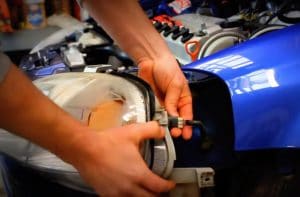
Step 2: Softening the Sealant
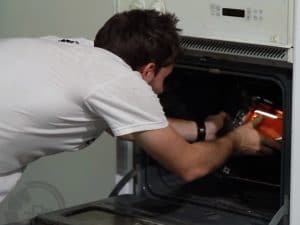
 Chris Robson Auto Mechanic
Chris Robson Auto MechanicPro Tip: Preheating the Oven
You don’t want to put the headlight in the oven while it’s preheating because the burner used to generate the heat gets significantly hotter by proximity than the radiant heat once the oven reaches the desired temperature. If you do place the headlight in the oven while it’s preheating, the burner can often get hot enough to melt, discolor, or otherwise deform the plastic and lenses. Another way to help mitigate this is by putting the rack as far away from the burners as possible–generally at the top or middle depending on the burner arrangement.
Step 3: Prying the Headlight
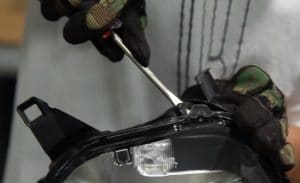
 Chris Robson Auto Mechanic
Chris Robson Auto MechanicPro Tip: Start on the Bottom of the Headlight
Because people look at cars from above, you can minimize any potential deforming or scarring from opening up your headlight’s body. While it might seem intuitive to start from the top of the headlight and work around, it is actually better to start from the bottom. This way, the most force you have to use to get that first opening will be under the vehicle once the headlight is reinstalled. It’s also a good idea to start prying the headlight body from a corner as that has greater structural integrity. Also, do not work in a circle, work half way one side, then work the other half from the starting point going the opposite direction.
 Chris Robson Auto Mechanic
Chris Robson Auto MechanicPro Tip: Work the Butyl
Once you have separated the two halves of the headlight’s body, take your flathead screwdriver and work it through the groove in which the sealant already sits. You’re going to do this because your new sealant is going sit directly on top of the old sealant. Of course, if you’re restoring an older model vehicle and the sealant is rotted, you may have to remove it altogether. However, a rotted sealant is already very brittle and fairly easy to remove. Once you have the old sealant pressed flat to the base of the groove, you are ready to apply the sealant.
Step 4: Preparing the Sealant
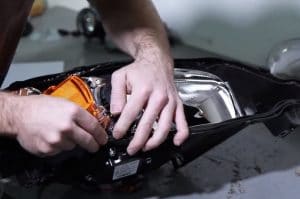
 Chris Robson Auto Mechanic
Chris Robson Auto MechanicPro Tip: Work the Sealant
Literally right before you actually apply the sealant, you’re going to want to work with it a bit, pulling on it. This is because the sealant is likely to come in strips, and you will get a much cleaner and stronger seal if you don’t have any breaks in the seal. Well, if you have to use more than one strip, the point where the second strip begins will inherently be a break in the seal. The way to fix this is by pulling on and stretching out the new sealant ahead of time. Just be careful that you do not stretch it too thin, or you will create the same kind of problem you were trying to prevent.
Step 5: Testing the Light
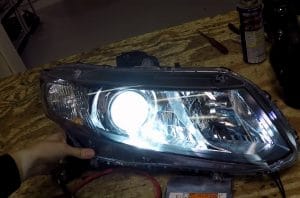
Step 6: Baking the Sealant
Baking the sealant is going to work pretty much just like with baking the headlight the first time, except this time you have had an opportunity to get into something of a rhythm if you have been following these steps in sequence with each half of the headlight. One thing to keep in mind is that the new sealant will be sitting on top of the old sealant, so if you’re not careful, it can overflow. This is especially true if you bake your headlights at higher temperatures where the sealant will expand and flow more easily.
 Chris Robson Auto Mechanic
Chris Robson Auto MechanicPro Tip: The Countdown
Once the new sealant has been baked, you will precious scant time to get it properly seated before it begins to cool and shrink. If you haven’t properly seated the headlight before the sealant begins to cool and shrink, there is no saving that attempt. Instead, you will have to rebake the headlight to once again soften the sealant to a properly workable state. As you can see, making sure that you work at a quick, measured pace is vital to ensure that you don’t have to retread the same territory. You can also press the inside corner of the headlight against a firm surface immediately upon removal from the oven to get a jump start on the process.
Step 7: Clamping the Headlight
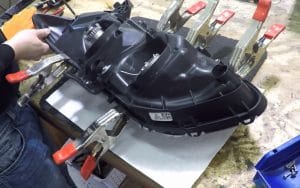
 Chris Robson Auto Mechanic
Chris Robson Auto MechanicPro Tip: Seat the Tabs
Once you have the headlight properly fastened, you want to make sure that the tabs are properly seated. You’ll also eventually need to worry about the screws if your headlight body has them, but the tabs are more important. This is because the sealant will likely overflow once you seat the headlight’s 2 halves–which is okay at this point as opposed as to in the oven. Still, you need to make sure the tabs are seated and cleaned before any overflowed sealant cools too much. That said, this actually begins the process of the next step.
Step 8: Removing Excess Sealant
This step is technically part of the cleanup but is vital to a proper seal. Using the process we have outlined, you should expect sealant to overflow from the side of the headlight body as you seat it. Once that overflow has cooled to a point where it is no longer gooey, you’ll want to begin cleaning it off the headlight body. If you start cleaning the excess off too soon, you’ll just make a mess that you’ll still have to clean off after it cools. The easiest way to clean the excess sealant is with goo gone, though there are other methods as well. Still, even goo gone works best when the sealant is cooled a bit.
 Chris Robson Auto Mechanic
Chris Robson Auto MechanicPro Tip: Sealant Ball
For people who are regularly resealing their headlight–whether due to conversion kits or whatnot–goo gone is a time-consuming and costly expense. Thankfully, pretty much every sealant has a point in the cooling stage where it’s no longer gooey but still tacky. At this point, you can literally pluck the excess sealant off of the headlight body. Once you have enough of the sealant to turn into a small ball, you can use the ball to pull off the rest of the excess sealant. If timed properly, this can leave the exterior completely clean without the use of goo gone. Don’t worry if you don’t get it right the first time as it does take some practice to master.
Conclusion
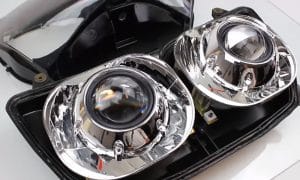
If you bake your headlight at too high of temperatures or use too much force when prying the headlight body apart the first time, there’s no going back from that. Now you just need a new headlight. Be careful! That’s why we stress carefully following these instructions and not hesitating to throw the headlight back in the oven to bake a little bit longer if the sealant isn’t pliable. Leave a comment below to share with us any pro tips you know for resealing headlights.
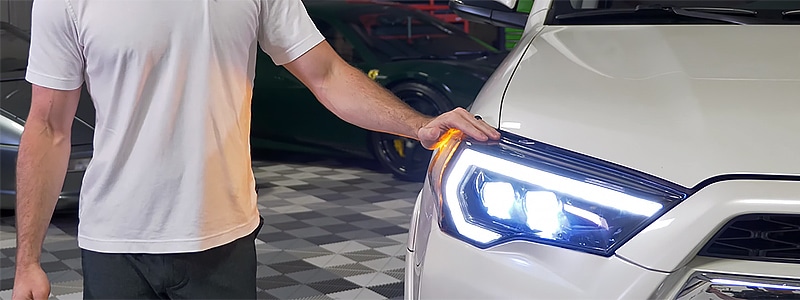
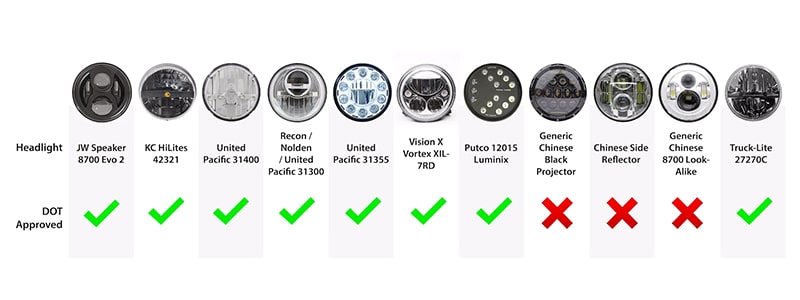
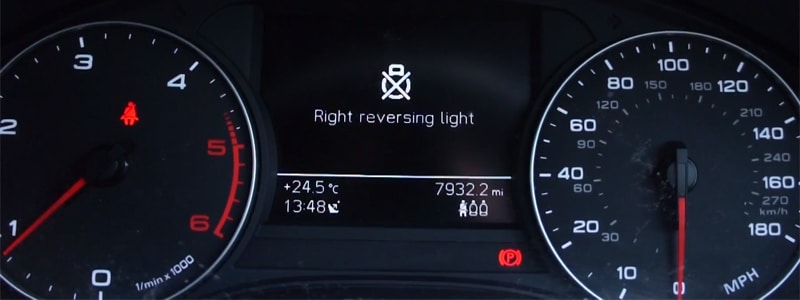
I would like to do this to my 1992 s10 blazer tail lights, but I fear adhesive is to old or not a kind I can bake in the oven to loosen. The reason for doing this because I want to make my own custom tail lights.
hi
my name is ramez and i have work shop we have alot of head lights broken Mercedes Audi Porsche BMW rang rover
and lens inside look good
i hope if there is away to fix all this lights or tell me how we can work to gather
i can provide 1000 of lights i work with insurance
please contact me on whats app 0096891205120
I took my 2012 Grand Sport Corvette to a dealership to service it, repair the gasket around the headlight. My headlights were clear with just a start of some condensation. I went to look at my car and there looks like something rough like glue of some sort all over the lens on both sides. Dealership states that it is my headlights starting to yellow and all vettes do that after 6 years. Also that they didn’t do it. I have pics of my car including the lights a week before I took it to them. It shows my headlights were clear. They’ve had my car for 2 1/2 weeks. Now they want to send my car to a company that will fix them and film it again. I’m afraid I am going to get stuck with yellowing lights. They refuse to replace my lights even when I showed them the pics
I want to talk to u . As I have 3000 kgs headlights which glass to be separate. My mno is 9314522525.